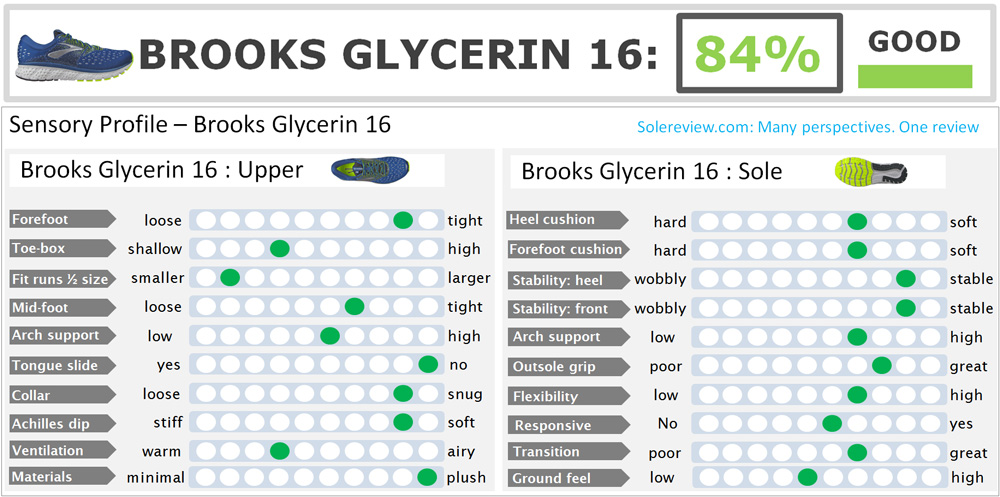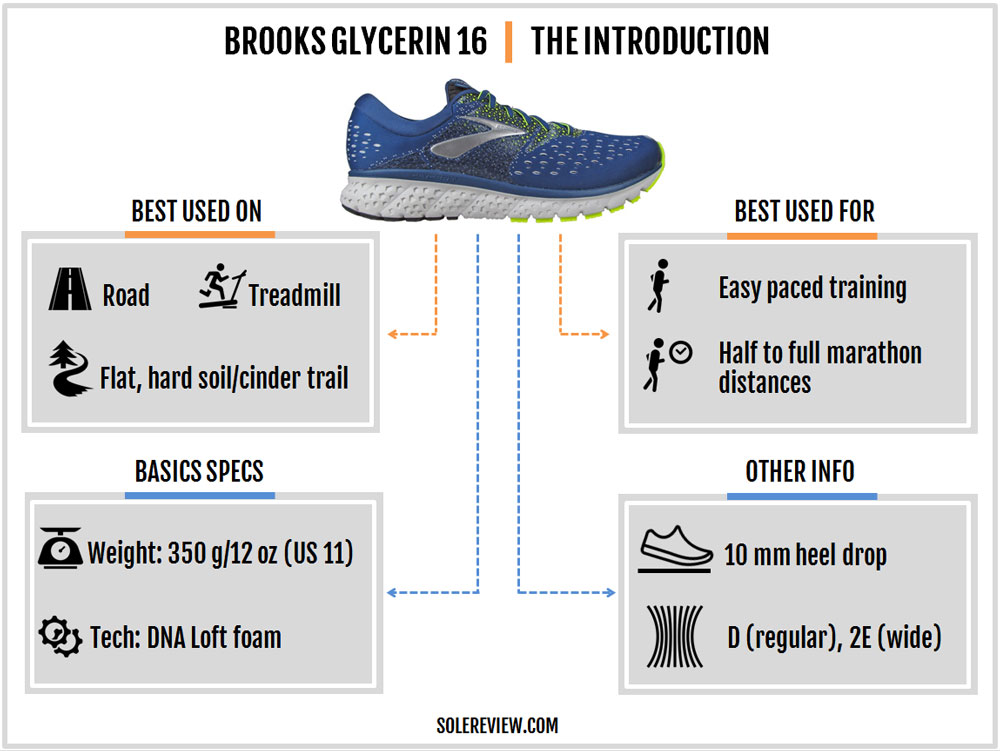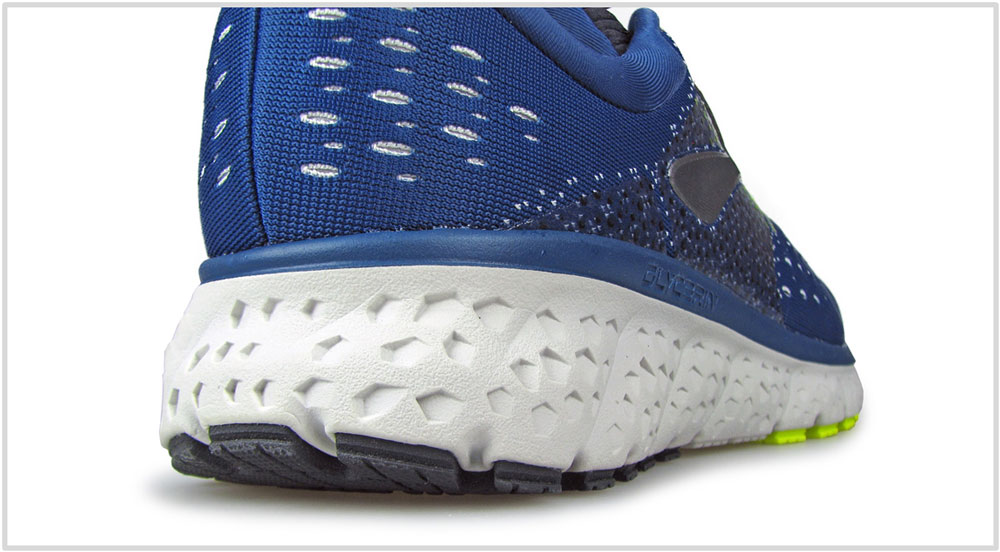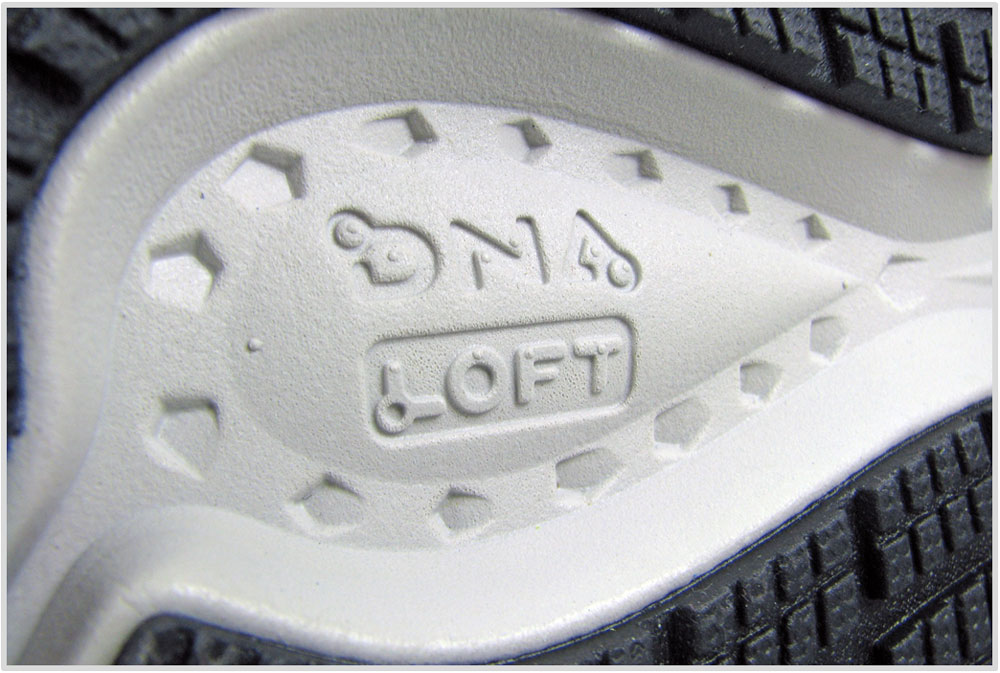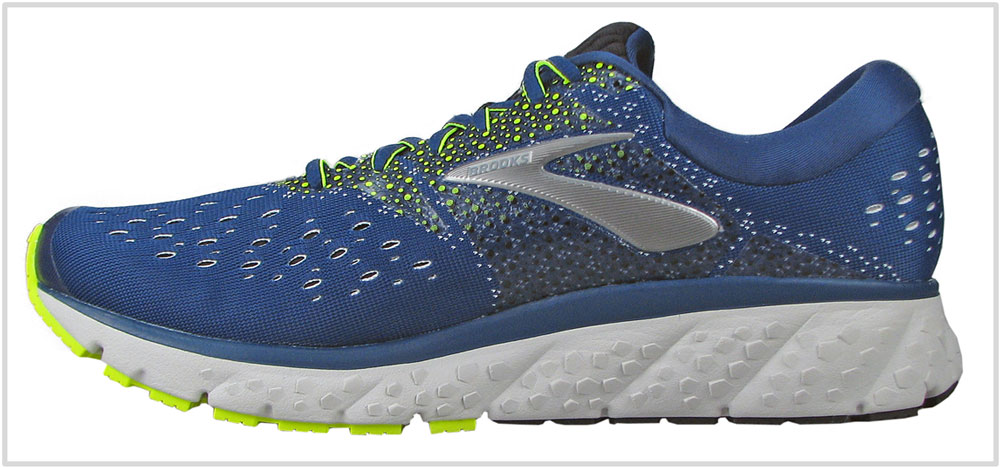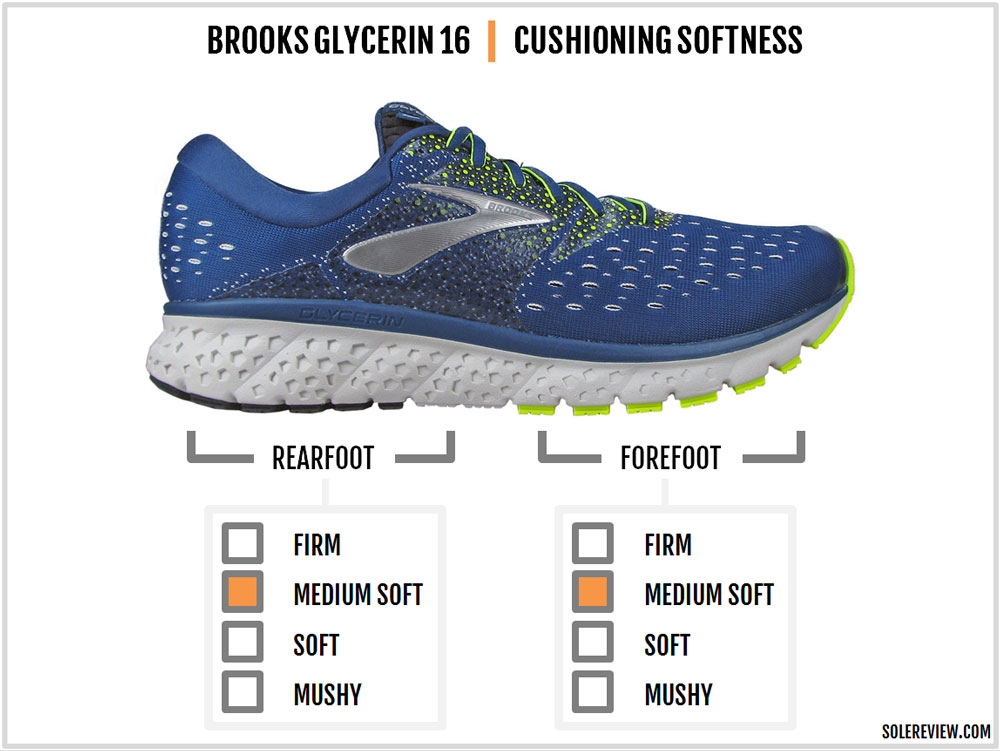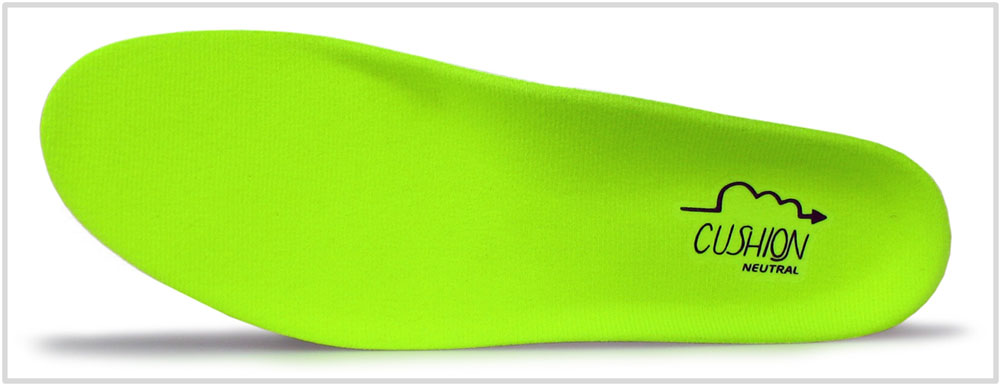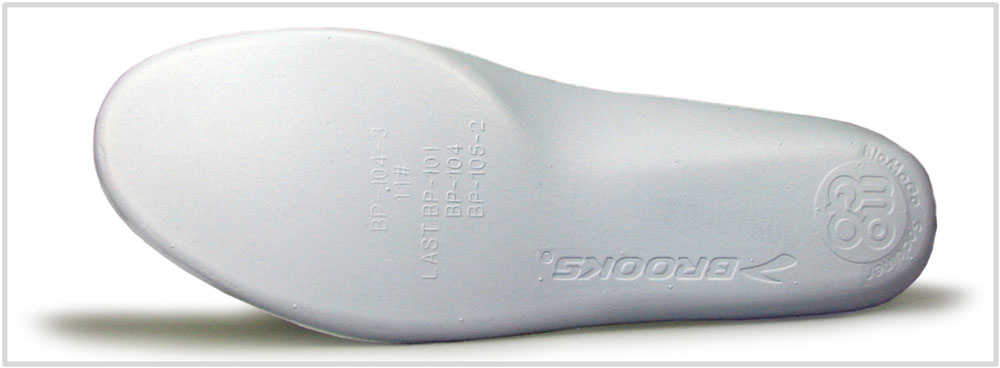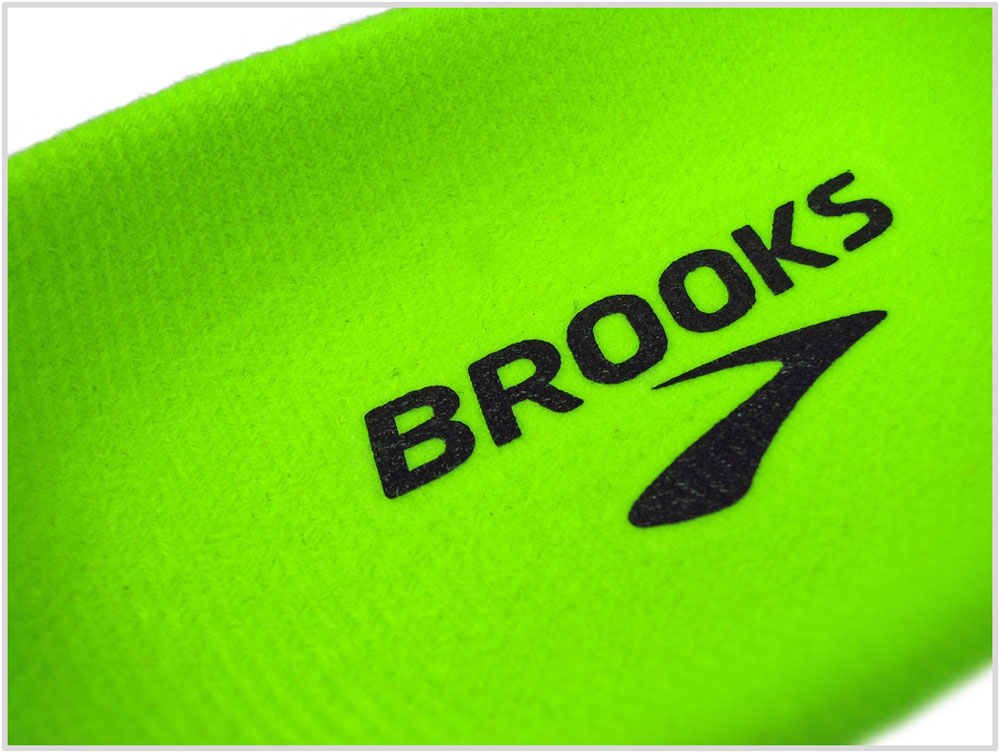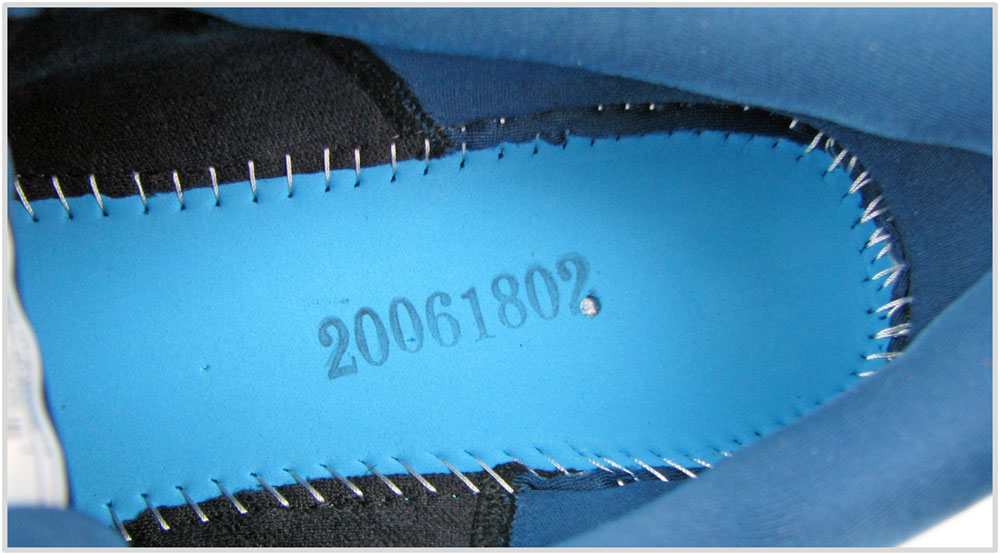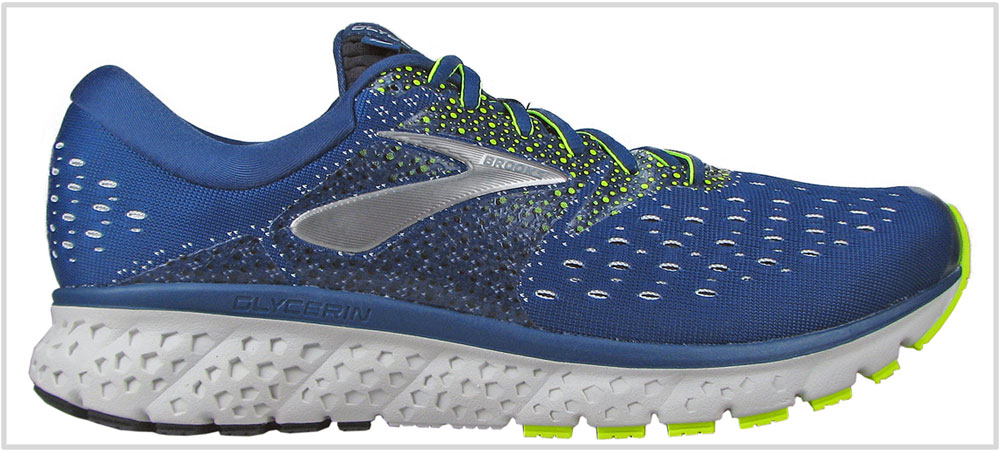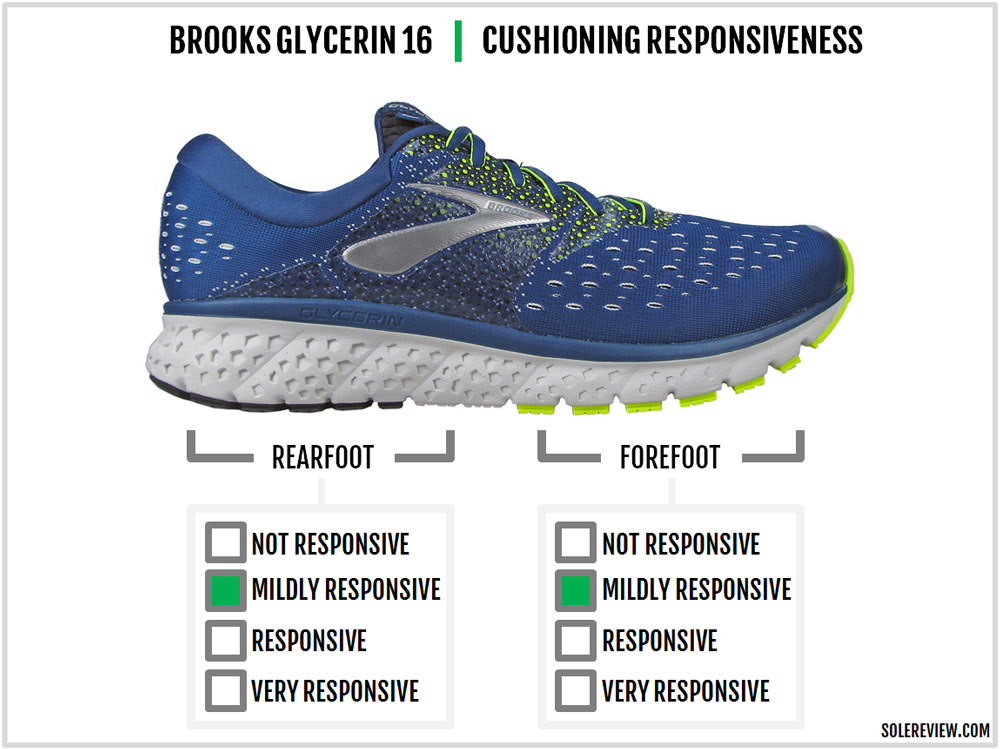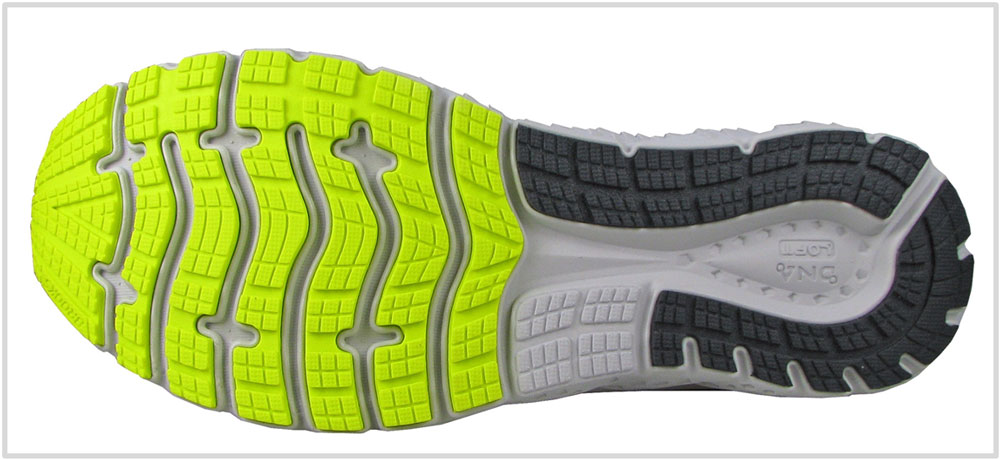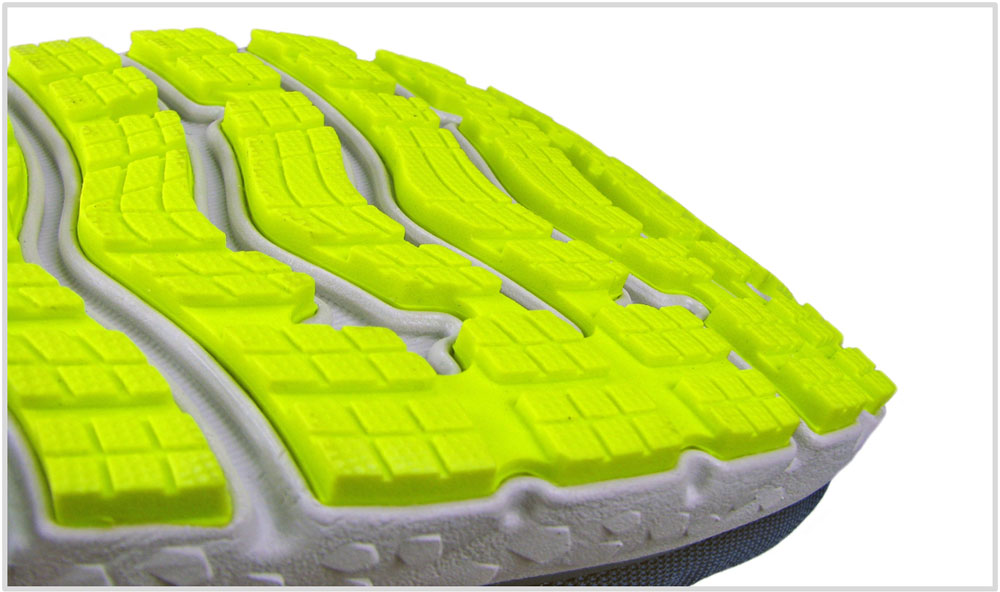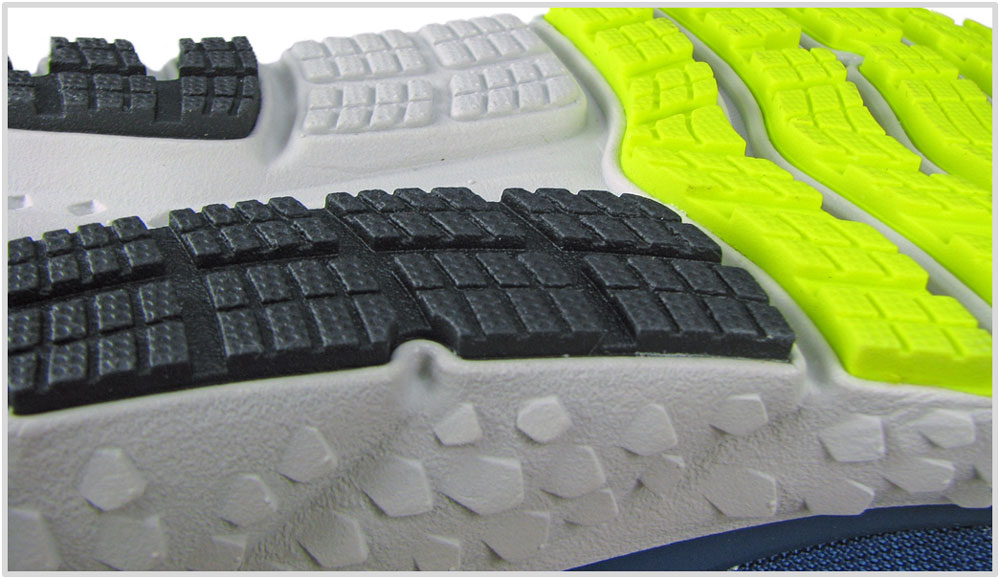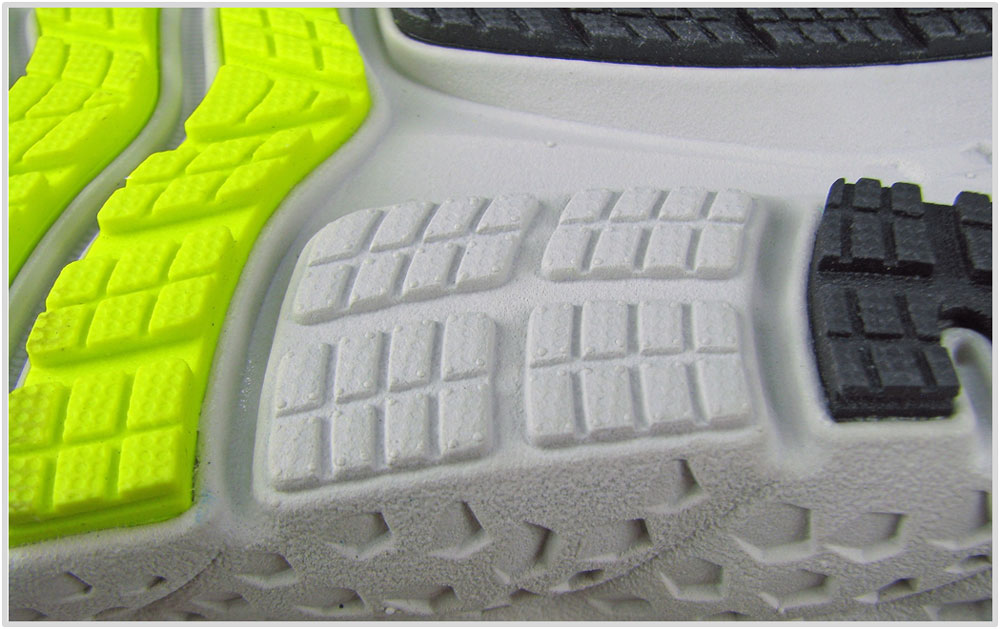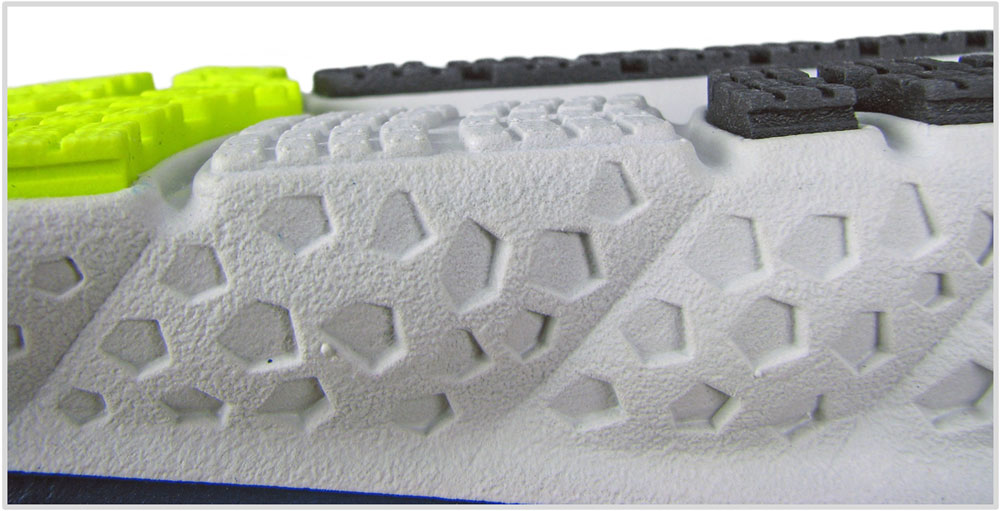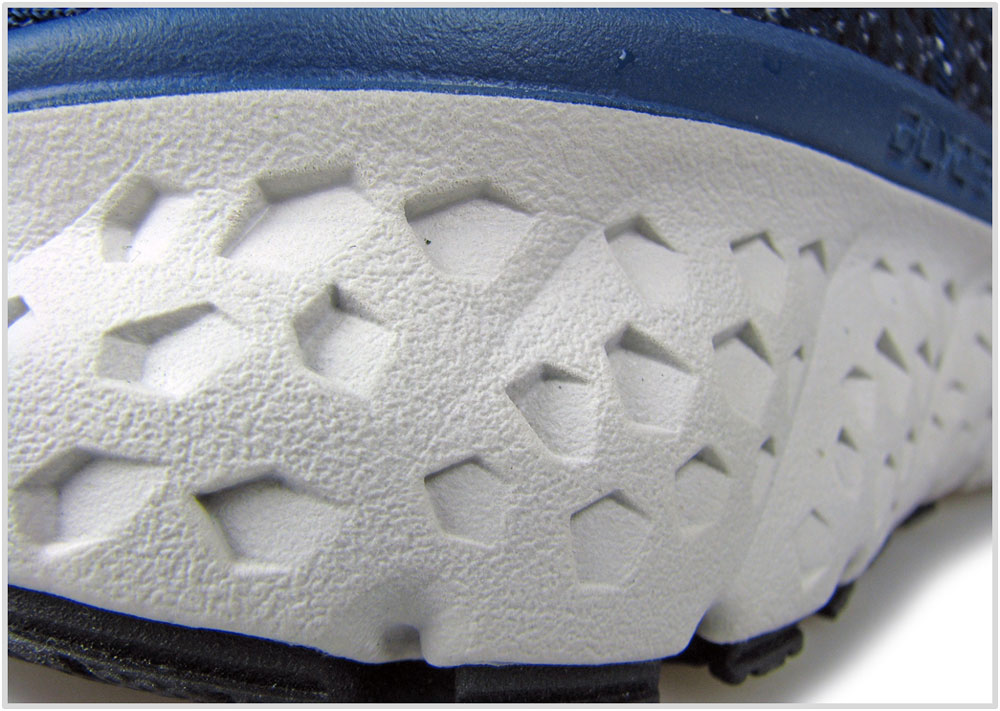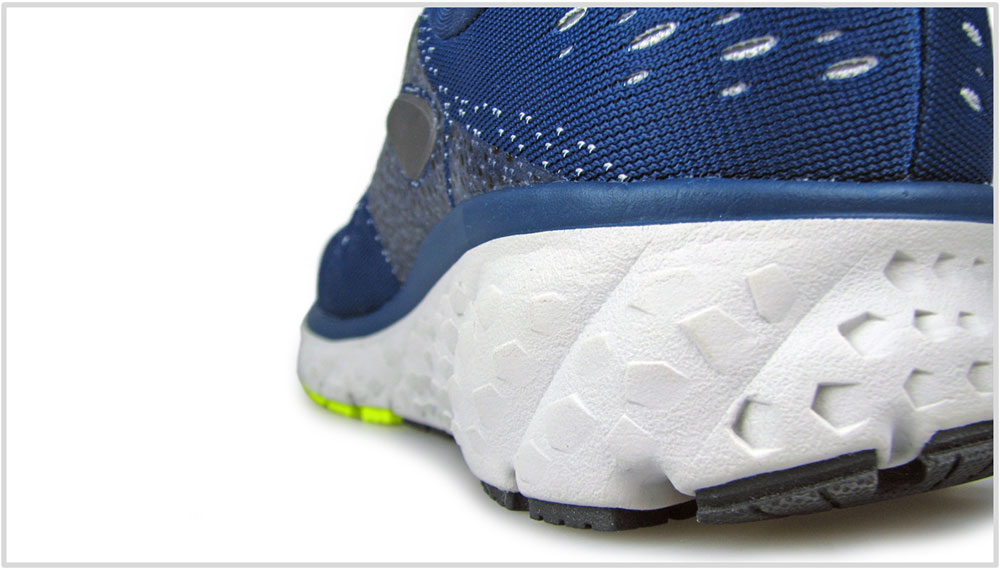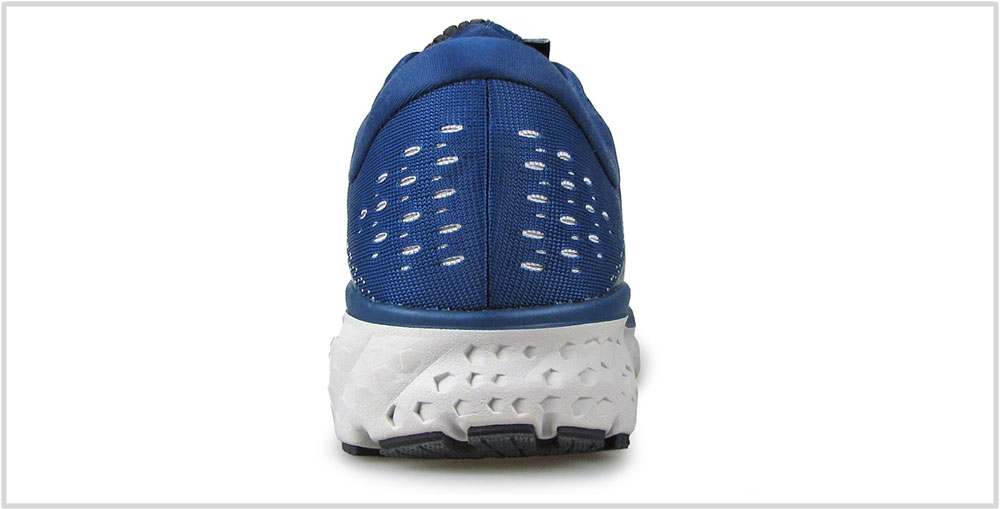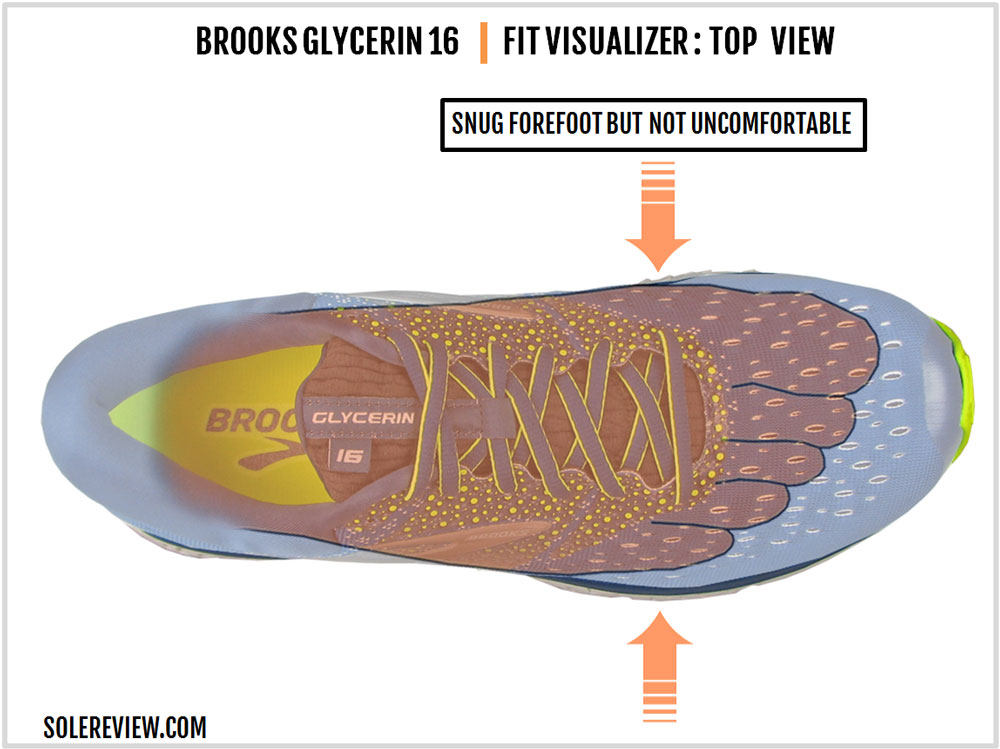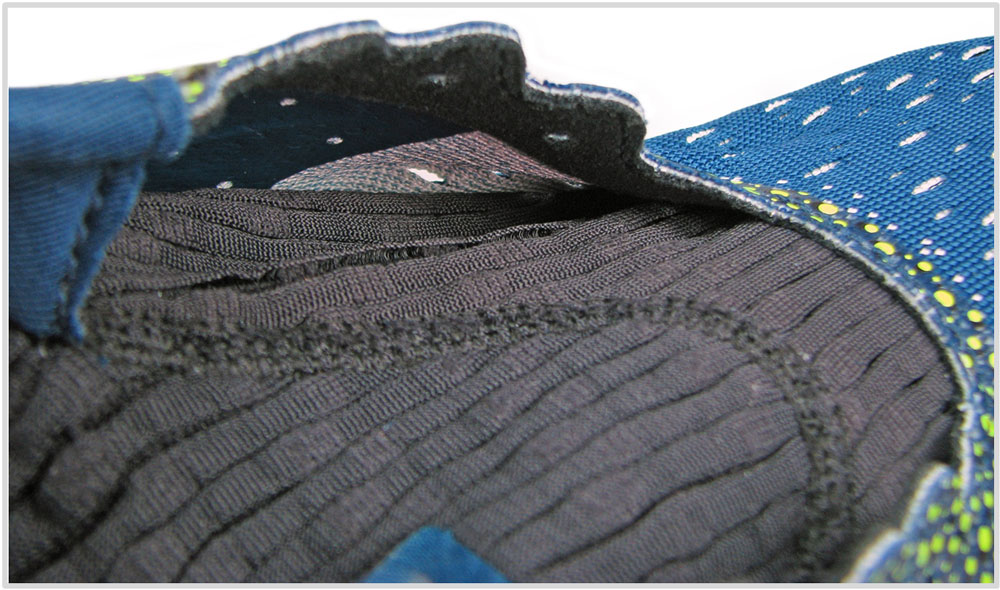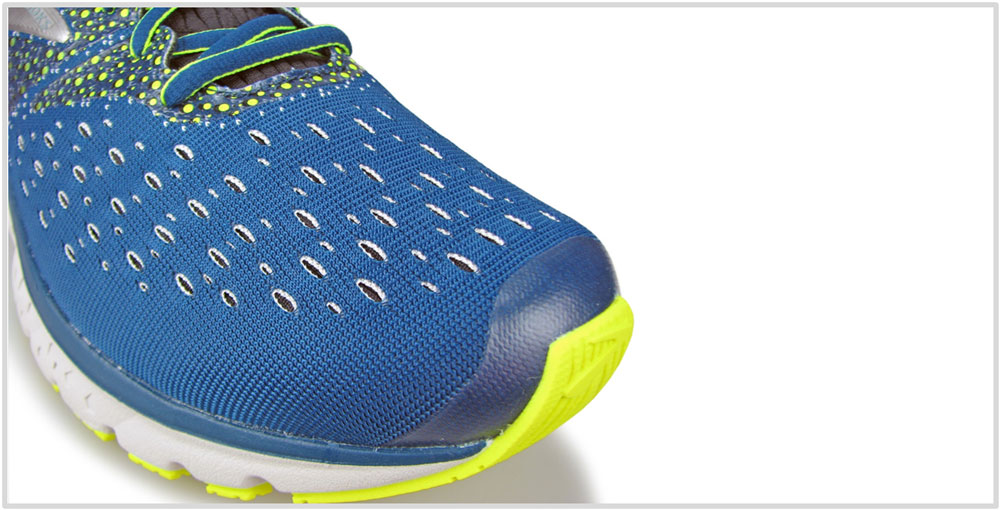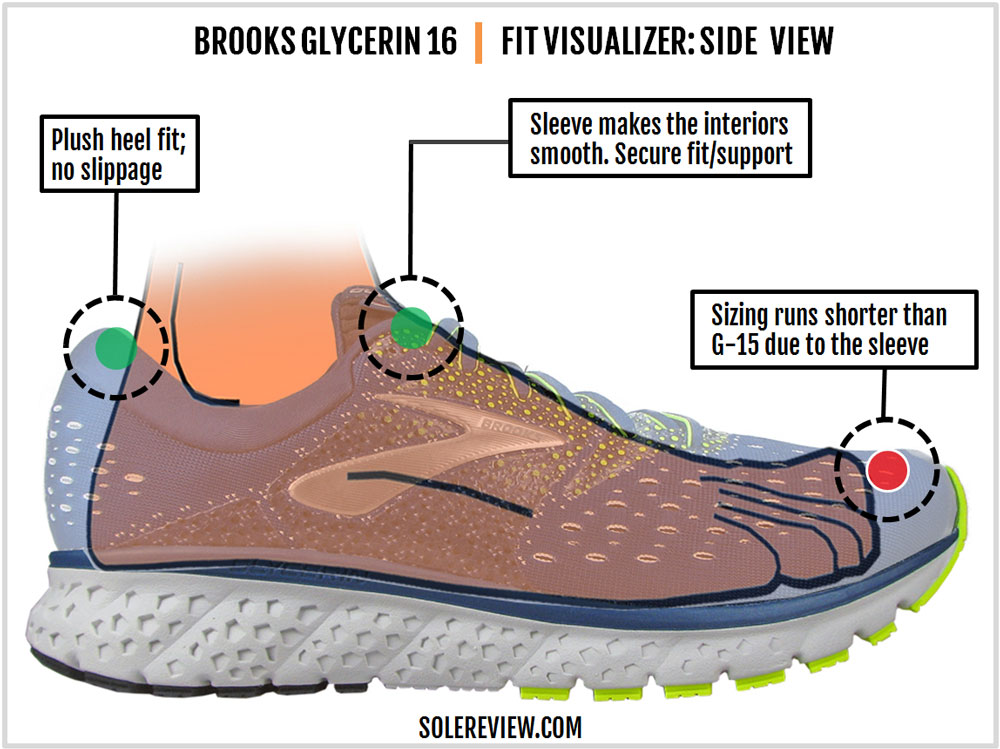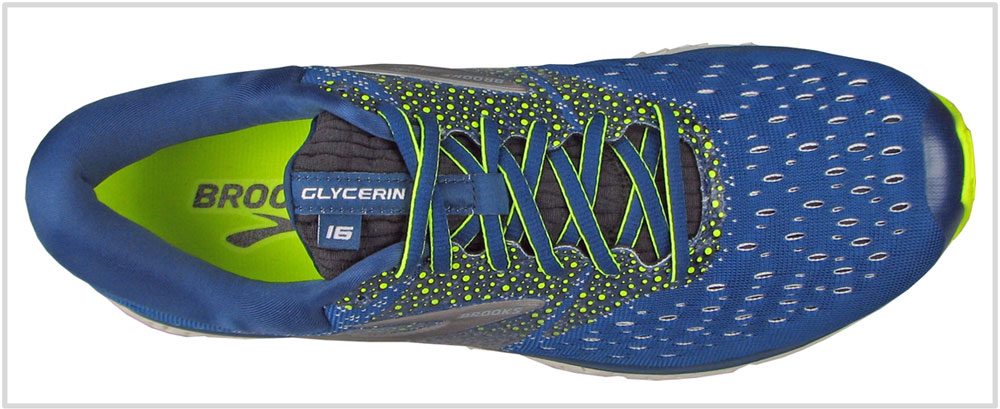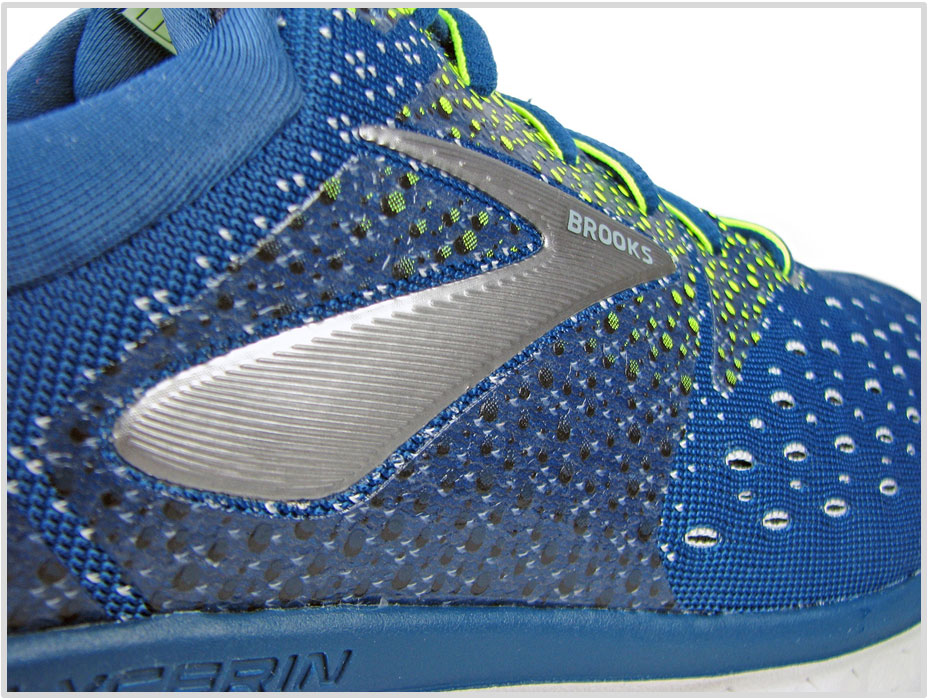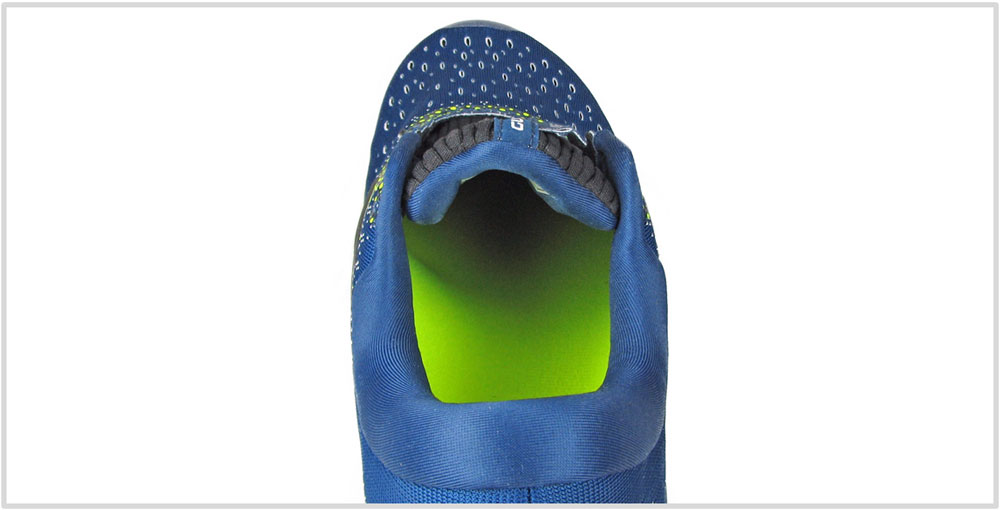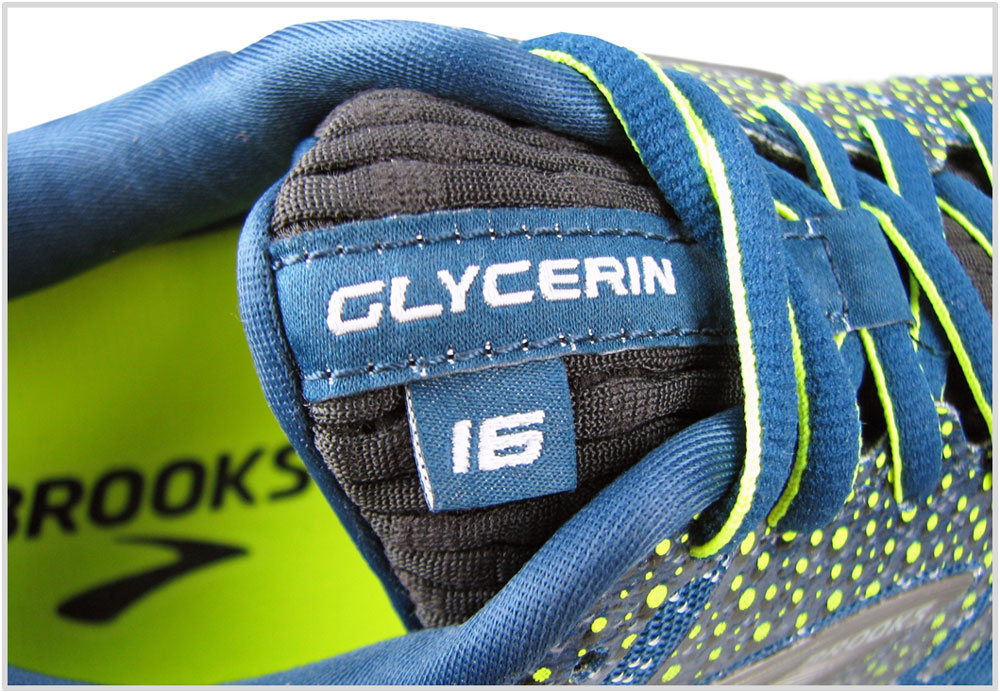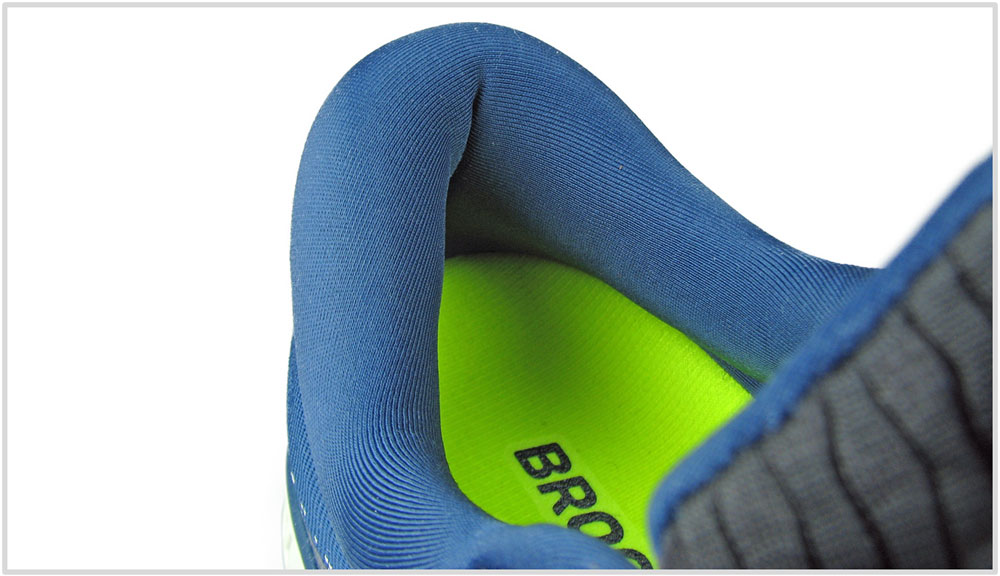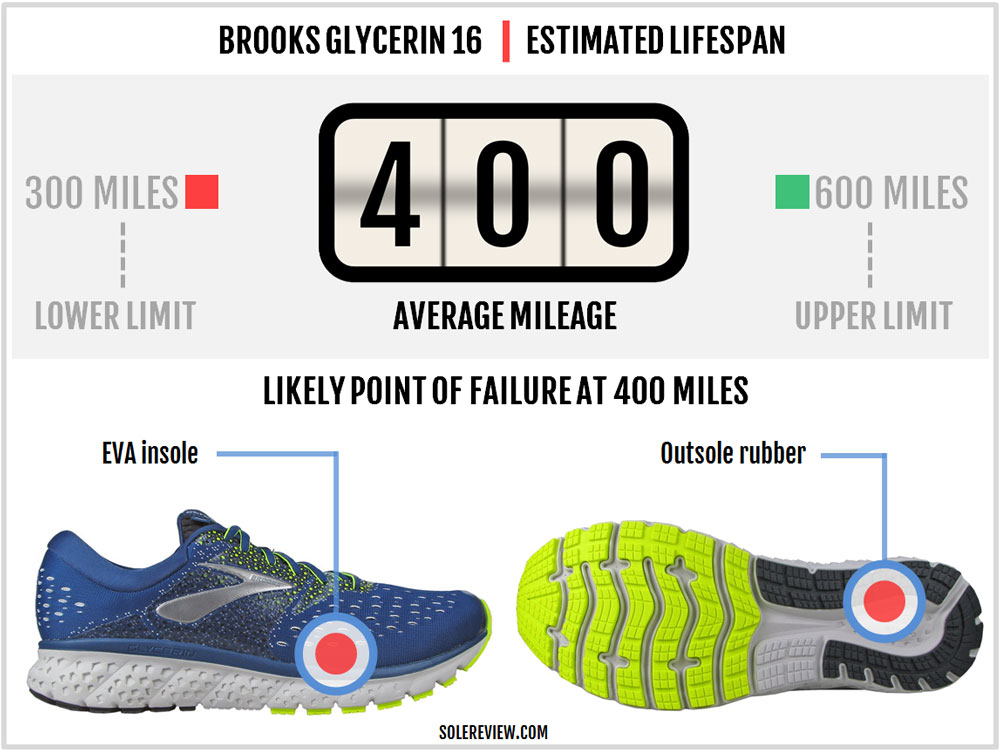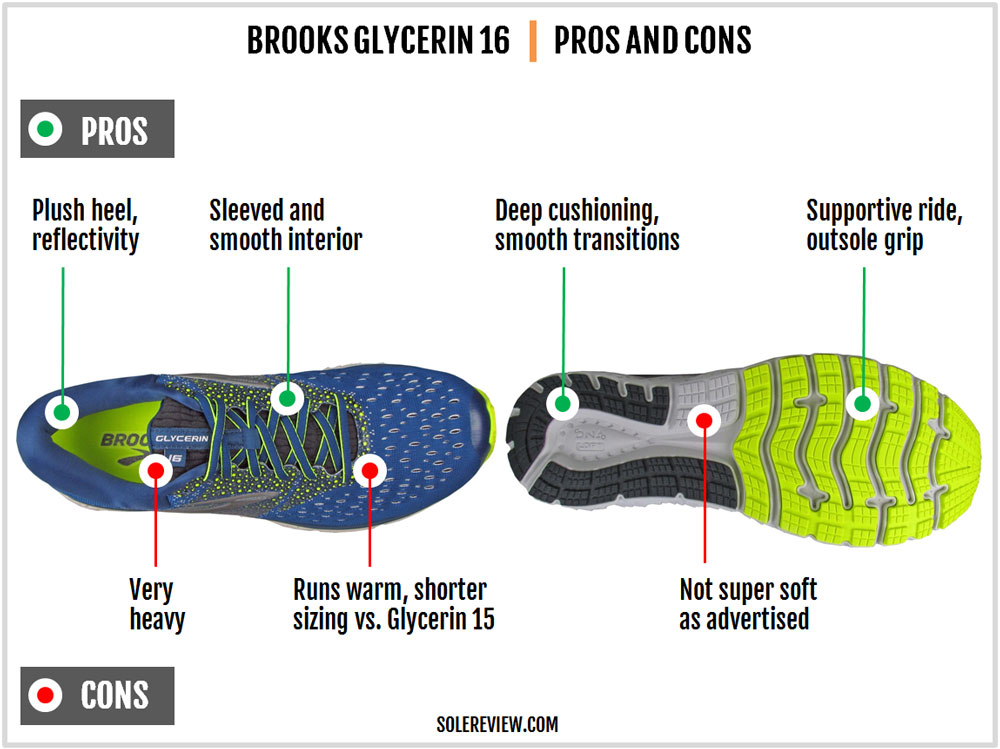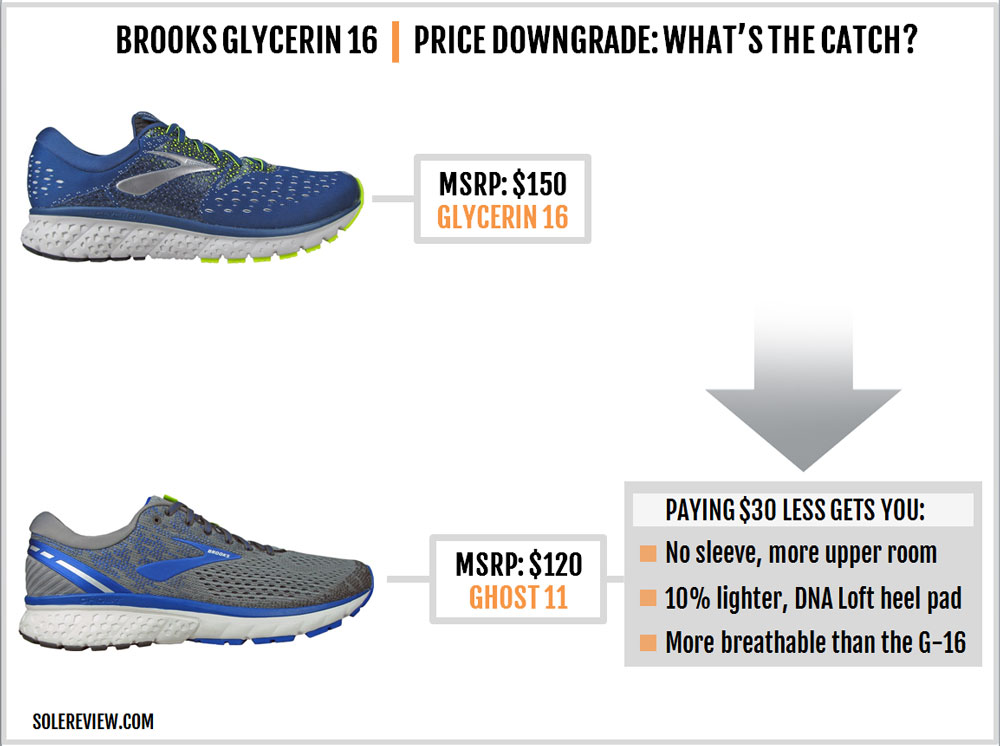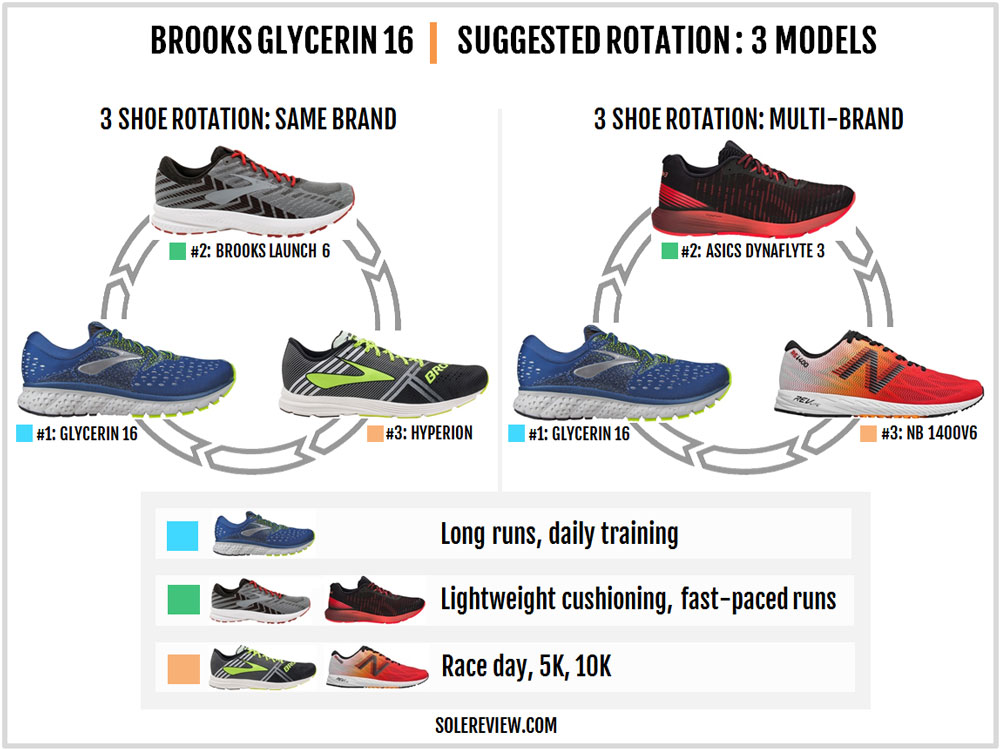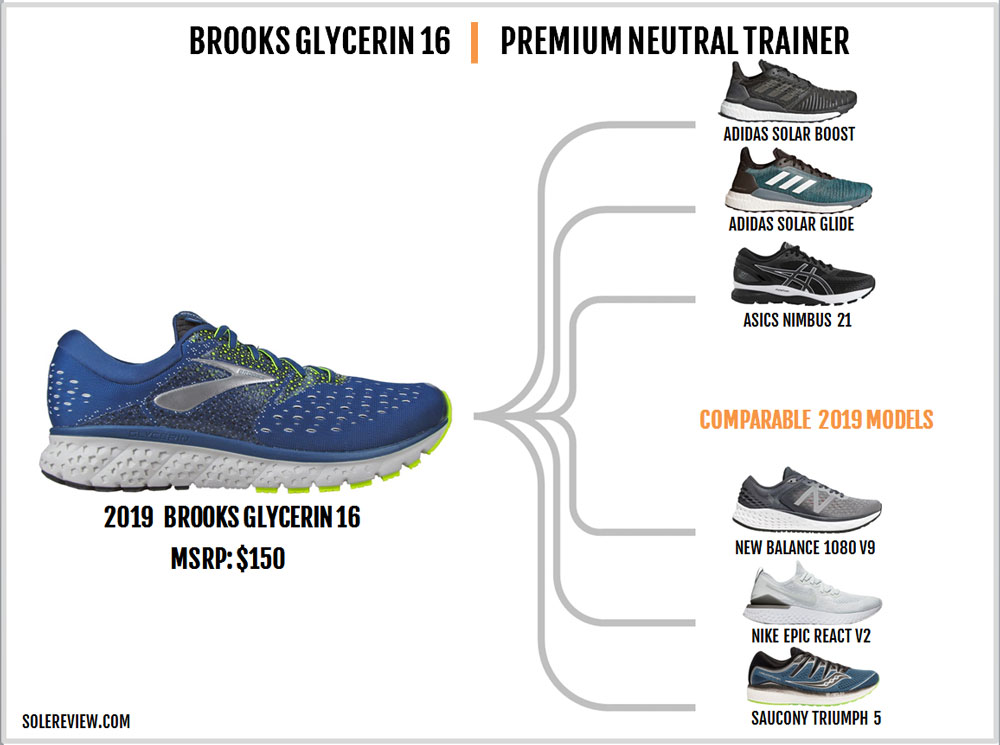INTRODUCTION
When Brooks swapped the DNA Gel unit with the all-foam ‘Super DNA’ midsole five years ago, we were disappointed.
The Glycerin 10 and 11’s DNA Gel inserts had non-Newtonian properties. This meant that the material turned firmer or softer with pressure. If you ran fast, the Gel hardened for better efficiency. At walking or slow running speeds, the Gel offered a softer cushioning experience.
When Brooks discontinued the tradition of inserting cushioning inserts, it was ahead of its time. The SuperDNA foam wasn’t (and still isn’t) extraordinary by any stretch of the imagination, but it was step in the right direction.
In 2019, very few care about antiquated cushioning tech. A new generation of midsole foam materials has taken over. From the Boost to Everun to React to ZoomX, there’s something for everyone.
Brooks and New Balance aren’t quite there yet with their foam materials but that hasn’t been for the lack of trying. After SuperDNA, Brooks released the DNA AMP – a sealed Polyurethane foam first seen on the Levitate.
The DNA AMP has a signature ride quality due to its unique design. The outer covering contains the foam compression process, so what you experience is a vertical rebound. The DNA AMP is basically old-school Polyurethane so it comes with added weight.
With the SuperDNA being several years old and the DNA AMP limited in its range of utility, it was high time Brooks got something new to the market.
In comes DNA Loft, a new midsole cushioning platform. Going by the spate of new releases, it appears that the DNA Loft is going to become the de facto successor to the SuperDNA.
The Glycerin 16 has a full-length DNA Loft midsole, and so does the Brooks Transcend 6. Even the Ghost 11 and Adrenaline 19 have midsole crash pads made of the same material.
DNA Loft isn’t ‘super-soft’ as Brooks claims it to be. While the Glycerin 16 delivers a cushioned ride, it is still firm by Adidas Boost, Nike Zoom X or Reebok Floatride standards.
There’s merit in Brooks’s marketing claim if they are looking only within their own line-up. The Loft is softer than certain instances of SuperDNA and Biomogo foam.
The new Brooks Glycerin 16 is a cushioned neutral trainer with a supportive feel – and that’s how the Glycerin has been as long as we can remember. It’s an excellent shoe for unhurried long runs and such; this isn’t a shoe for setting personal bests.
At a fundamental level, there isn’t a significant difference between the G-16 and 15 except for the new upper. The G-16 fits slightly shorter due to the full inner sleeve under a thicker outer mesh. The price stays the same, and there are a couple of widths you can choose from.
THE RIDE EXPERIENCE
To say that Brooks virtually invented the ‘supportive neutral’ category wouldn’t be a stretch at all. Even in the DNA Gel era, neutral Brooks running shoes were always supportive. They were seldom the soft, marshmallowy running shoes found elsewhere in the neutral cushioning segment.
Brooks also brought non-medial post running shoes into the mainstream. The first Transcend also arrived a few years early. Today, many otherwise medially-posted stability models have evolved to a more ‘neutral’ profile or are being phased out.
In essence, version 16 is much a legacy Glycerin except for a slightly updated ride.
By contemporary running shoe standards, the DNA Loft is somewhat firm. It’s got a rubbery feel to it; the Loft feels halfway between SuperDNA and Nike’s React foam.
If you experience any plushness, that’s because of the removable insole overlaid on top. There’s a layer of foam lasting beneath the insole which softens the underfoot experience.
The 10 mm heel offset Glycerin weighs 12.34 grams or 350 grams for a pair of US 11. This is a heavy shoe; Brooks needs to conjure something lightweight soon. Volume for volume, the Reebok Floatride, and Nike React, and ZoomX provide lively cushioning at a much lower weight.
The Glycerin 16 performs best when used for easy training runs (8.51 min/mile, 5.30 min/km or slower). The DNA Loft has a deep cushioning reservoir to tap from so longer miles are very comfortable.
If you feel that the Glycerin’s weight is a bit of a drag then the Ghost 11 is a lighter alternative with more interior room. The published weights on Brooks’s product page(s) appear incorrect by a huge margin.
According to Brooks, the Ghost 11 (309 g/10.9 oz) is heavier than the Glycerin (300.5 g/10.6 oz). That can’t be right and it’s a typo by the agency which updates their website.
We weighed our US 11 pairs of the Glycerin 16 and the Ghost 11 and the shoes came in at 350 gms/12.3 oz and 315 gms/11.1 ounces respectively. It’s evident that the Ghost 11 is much lighter than the Glycerin.
A bouncy ride experience isn’t a part of the Glycerin 16 persona. And we define ‘bouncy’ based on foams such as the Boost, Everun, and the ZoomX.
A good explanation would be that the DNA Loft doesn’t compress a lot to begin with, so rebounds are of a lower frequency. DNA Loft does rebound into place but since that’s happening within a limited depth, the best you can extract out of the DNA Loft is a sense of mild responsiveness.
The entire midsole is made of a single material with no crash pads, so the loading happens in a smooth manner. This transition quality has always been a hallmark of the Glycerin and this year is no different.
The outsole layout and material contributes to the transition quality. The forefoot has rows of segmented blown rubber which delivers a muffled and padded landing along with superior grip.
The under-heel transition cavity centers the weight and the multiple rows of grooves result in a natural flexing motion. The relative firmness of the materials doesn’t make the Glycerin overly flexible, but it does produce a seamless ride quality.
There appears to be a design oversight on the Glycerin 16. Under the outer/lateral outsole, there’s a section which is not covered by rubber. The exposed foam area isn’t flush with the rest of the outsole. This could be an oversight because the Ghost 11’s (similar) foam section is flush with the outsole.
Not that it matters. We wished we could have said something like ‘the missing section creates a gap in midfoot transitions’, but we didn’t notice it at all. We thought to highlight it, that’s all.
The Glycerin 16 is very supportive, regardless of its midsole design. The outer side has a colony of shallow cavities molded into them; the inner side has a filled-up design. This is similar to what New Balance is currently doing with their Fresh Foam midsoles.
Despite the difference in midsole molding, there’s no bias towards the outer side. The midsole holds its compression extremely well and does not throw you around during runs.
The Glycerin 16 is a very neutral shoe with above-average levels of support. The Glycerin’s sidewalls also curve high on the inner side, resulting in an increased sense of under-arch support.
UPPER FIT QUALITY
When seen from the lens of an experienced Glycerin user, a couple of changes on the 16 become obvious.
The first is the shorter sizing and narrower fit as compared to most previous editions. The second happens to be the full inner sleeve; both are related.
The Glycerin 16 feels shorter by 1/3rd a size and that’s not because of its last. In fact, the Glycerin has a wide toe-box when seen from the outside. It’s the new dual-mesh construction and full inner sleeve which affects the sizing.
Technically speaking, the 16 fits true to size. If you take individual sensory preferences into account, then perhaps buying a half-size larger will make more sense for a few runners.
The inner sleeve affects ventilation levels. The Glycerin 16 runs a lot warmer than any Glycerin model we’ve tried so far. Earlier versions did not have a double-layered forefoot; the 16 has.
The midfoot hugs the foot sans uncomfortable hot-spots. The sleeve and the tongue do an excellent job of wrapping around the midfoot. The detailing on the outside – the molded logos and the high-density printing – give the upper structural support.
Interior plushness is one area where the Glycerin 16 has been consistent every year.
There’s plenty of plush upholstery everywhere; the tongue is soft and padded, the round laces are soft and stretchy. The heel has a generous amount of foam packed under a luxurious lining. The heel and the internal stiffener work together to grip comfortably.
The Glycerin has plenty of low-light visibility elements. The outer heel has perforated sections with reflective overlays. Nowadays, it’s common to see expensive running shoes without any reflectivity at all, so it’s a relief to see Brooks not go all Uncle Scrooge on the finer stuff.
A 2E (wide) width is available should you feel that the forefoot is too narrow.
DURABILITY ASSESSMENT
Over the past two years, Brooks has made significant progress in improving their outsole quality. Earlier examples fared great on traction but poorly on durability. The newer Brooks models – including the Glycerin and Ghost – achieve a better balance between grip and rubber lifespan.
The outsole will eventually wear out but we’ve upped the threshold for the Brooks Glycerin 16 at 300 miles – with a projected median lifespan of 400 miles. The rest of the shoe is solidly stitched together so expect no unpleasant surprises.
We’ve haven’t noticed any cushioning loss in the DNA Loft midsole after 50 miles, though the insole will take a beating sooner than the rest.
PROS AND CONS
The Glycerin 16 maintains its smooth and consistent ride quality – that hasn’t changed. The DNA Loft isn’t soft as Brooks makes it out to be. That said, it does offer a cushioned ride experience suitable for long-distance runs and such.
The midsole is very supportive with no bias, and the outsole rubber grips well. On the flip side, the Glycerin is a heavy shoe – our US 11 half-pair tipped the scales at over 12 ounces. This kind of bulk made the cut in 2011, but in 2019 that’s way over the acceptable limit for a neutral trainer.
The insides of the Glycerin are very plush and smooth with no evidence of cost-cutting. The upper holds the foot securely – maybe too well in the forefoot – and the interiors run warmer than the past versions of the Glycerin.
It’s a comfortable and supportive neutral shoe, but you need to be mindful of its weight and snug fit.
LOWER PRICED ALTERNATIVE
The less expensive Ghost 11 doesn’t have a full-length DNA Loft midsole. It doesn’t have a full inner sleeve either. But here’s a classic case of win some, lose some.
The Ghost 11 is 10% lighter than the Glycerin (never mind the erroneous Brooks specs) and has more interior room and ventilation. It feels less of an effort to run longer miles in the Ghost. If we given a choice, we’d pick the Ghost over the new Glycerin.
There’s only a DNA Loft crash pad here – the rest of the midsole is the BioMogo EVA blend. Surprisingly, the Ghost 11 feels softer to run in than the Glycerin. The BioMogo foam is easier to compress than the DNA Loft.
The Ghost 11 is a great pick over the Glycerin if you value a lighter build and upper room – all at a lower retail price.
RECOMMENDED ROTATION
A pair of Brooks Launch 6 rotates well with the Glycerin. It’s firmer and much lighter – thus more suited for faster training runs than the G-16.
Brooks lacks a strong line-up of road racers so the narrow-fitting Hyperion (and Asteria) are your currently available options. We’ll recommend the New Balance 1400V6 over the Hyperion – the 1400 is more comfortable, has a better upper fit and is perfect for short road races.
At 9-ounces, the Asics Dynaflyte 3 is a lightweight trainer with a fast feel. It’s cushioned yet firm and its 8 mm offset aligns with the rest of the rotational recommendations.
SIMILAR NEUTRAL CUSHIONED SHOES
In the world of premium neutral trainers, the adidas Solar Boost and Solar Glide offer a higher level of cushioning softness over the Glycerin. Conversely, the adidas models are nowhere near supportive because of the ride softness. You’ll get a longer lifespan with the Boost models due to the outsole and midsole materials.
The Nike Epic React V2 is a lightweight neutral running shoe with plenty of dense cushioning. The upper is minimal, so the Epic doesn’t have the plush feel of the Brooks model.
Another running shoe with high-density cushioning is the Saucony Triumph 5. It uses a full-length Everun midsole which is akin to a firmer version of the Boost foam. It works well as a daily trainer and long-mileage hauler. Like the Glycerin, the Triumph is a heavy shoe.
There’s only one ‘traditional’ shoe on this list, and that’s the Asics Nimbus 21. It’s replete with old-school running shoe trims like Gel inserts, a plastic midfoot shank in a multi-density midsole, and an upper heel clip. In short, it’s a comfortable yet hefty neutral trainer right out of the mid-2000’s.
What you get with the New Balance Fresh Foam 1080V9 is an uncomplicated neutral cushioning experience. Its Fresh Foam midsole isn’t very responsive; yet, it does offer deep yet non-mushy cushioning for daily training and marathons.
The Brooks Transcend 6 has evolved so much since the original that it’s hardly recognizable. It is almost like a Glycerin 16 today but more supportive. This recommendation defies conventional wisdom, but we believe that the Transcend 6 is the Glycerin’s closest match.
| Do you own this shoe? Improve this review by sharing your insights – submit a review here. |

